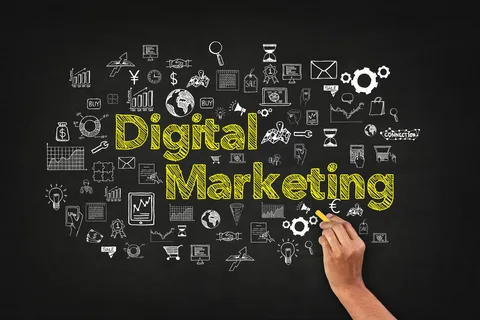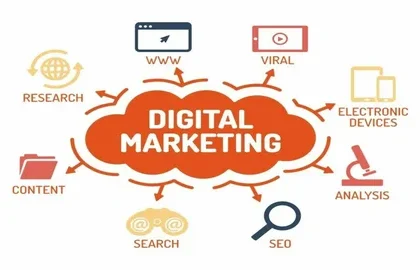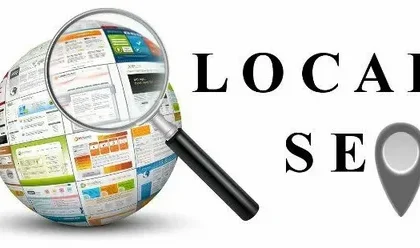How many stages are there in digital marketing?

by admont3am
Imagine taking part in an unforgettable digital marketing adventure – but unlike traditional journeys, this one takes place exclusively online. Understanding its stages is integral for crafting effective campaigns – whether from brand recognition through to conversion or whether there are more complex steps involved, but How many stages are there in digital marketing?
Here is a Step-by-Step Guide by Pervasive Marketing to understand its stages!
1. Planning and Strategy: Chart Your Course
Every journey starts with an actionable plan – especially digital marketing campaigns where establishing goals requires careful preparation and strategy planning in the form of developing goals, which include setting your budget. In digital marketing terms, this involves:
Investigate Your Target Audience: Understanding demographics, online behaviour and pain points are integral for designing effective campaigns.
Set SMART goals: Setting specific, Measurable, Achievable, Relevant and Time-bound goals ensures your efforts have a clearly defined direction and makes measuring success much simpler.
Constructing a digital marketing plan: Your digital marketing plan serves as the ultimate road map that details budget allocation, channel selection (email or social), content strategy development and measuring success using key performance indicators.
2. Awareness & Attraction: Casting a Wide Net
In the initial stage, your primary objective should be creating brand recognition and drawing in potential customers to your digital doorstep using strategies such as:
Content marketing: Producing valuable and information-packed blog posts, infographics and videos establishes you as an industry thought leader while drawing in customers searching for solutions.
Social Media Marketing: Engaging with the customers on relevant social media platforms will help you build brand awareness among key customers leading to converting traffic to all the media channels.
Search Engine Optimization: Targeted keywords as well as general term suggestions from the same topic that help the website to rise in search results will be an advantage for the customers to search and find you online.
3. Engaging and Considerating: Building Relationships
Once potential customers are onboard, it’s important to maintain and build relationships. At this stage, focus on:
Email marketing: By creating and cultivating an email list, targeted communication becomes possible – such as newsletters and promotions designed to educate subscribers while keeping your brand at the forefront of people’s minds.
Interactive content: Interactive quizzes and polls or download resources are bound to attract clients and become their immersive experience at the same time providing them both with the experience of your brand and offerings.
Social Media Engagement: Through responding to comments, joining the conversation, and hosting live events on social media platforms such as Twitter or Instagram, a community feeling and trust building with future customers might be created.
4. Conversion & Sales: Implementing Your Strategy
Convert website visitors into paying customers or subscribers using conversion optimization techniques like:
Landing page optimization: Optimizing landing pages requires creating engaging experiences for visitors that encourage action such as purchases and signups. A compelling call to action will do more for your conversion rate than anything else and that call will get more people to convert.
A/B Testing: Through a/B testing, you can identify the strongest strategy which involves the kind of elements on your website and calls to action that improve your conversion rates.
5. Retention & Advocacy: Generating Brand Champions
Success doesn’t end when sales occur – an effective digital marketing strategy requires prioritizing customer retention and cultivating loyal brand ambassadors as part of its plan. At this stage, activities may include:
Loyalty programs: It is best to give recurring customers some kind of bonuses and discounts to make them remain your brand preference.
Retargeting campaigns: The displayed ads target the site visitors who have not bought anything, but your brand is kept in their mind and they are urged to come back again at a later date.
Outstanding Customer Service: Exceptional customer service builds trust and fosters brand advocacy from your customer base, turning customers into brand promoters who recommend your brand to others.
Pervasive Marketing: A Roadmap to Success
All the elements we discussed – planning & strategy, awareness & attraction, engagement & consideration, conversion & sales and retention & advocacy – form the cornerstone of a comprehensive digital marketing plan. Understanding each stage enables you to craft an enticing journey for potential customers that leads them down a path towards becoming brand advocates and retaining them over time.
To understand the specific tactics and best practices for each stage of your digital marketing journey, visit Pervasive Marketing, your one-stop shop for all things Digital Marketing. We offer a comprehensive suite of services including SEO Services, Social Media Management Services, Web Design Texas Services and Content Marketing services to help you navigate each stage of your digital marketing journey and achieve online success!
Recommended Posts

What is SEO in digital marketing?
October 5, 2024

What is local SEO?
October 5, 2024

Do digital marketing agencies create content?
October 5, 2024
